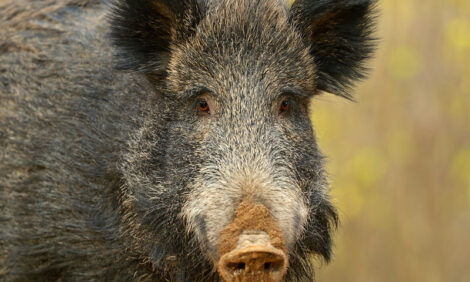



Illinois Pork Producers Face Question
URBANA - Illinois hog producers should experience a profitable 2004 but face a difficult question as to whether the industry will be profitable over the next five years, said a University of Illinois Extension farm management specialist.
"The amount of continued expansion or liquidation, the strength of consumer demand for pork, the level of exports, and the availability of reasonably priced corn and protein supplements will largely determine the profitability of hog production during the next five years," said Dale Lattz, who authored the recent report, "Costs to Produce Hogs in Illinois--2003."
Lattz noted that higher total returns in 2003 allowed Illinois hog producer profits to increase by $4.79 per hundredweight of pork produced compared to 2002. Total returns in 2003 averaged $38.15 per hundredweight produced compared to $32.25 in 2002. However, total production costs still exceeded total returns in 2003 by 78 cents per hundredweight produced.
"For the five-year period, 1999 through 2003, total returns exceeded production costs by $1.01 per hundredweight," said Lattz. "Three of the past five years show a positive return for farrow-to-finish enterprises."
Data for the study came from farmers enrolled in the Illinois Farm Business Farm Management Association (FBFM) record-keeping and business analysis program.
Lattz noted that in 2003 feed costs were at the highest level since 1998, accounting for 60 percent of total costs. Non-feed costs declined between 2002 and 2003.
The study also divided Illinois pork producers into two categories--a group farrowing fewer than 500 litters for the year and a group farrowing 500 or more litters in 2003.
"Total cost of production per 100 pounds of pork for the two groups was higher for the small enterprises," said Lattz. "The larger enterprises averaged $36.51 per hundredweight produced and the smaller enterprises $40.32.
"The most significant cost difference between the two groups of farms was in feed cost per 100 pounds of pork produced. Larger enterprises have a $3.38 lower feed cost than smaller ones, $21.37 compared with $24.75. The $38 per ton lower price paid for commercial feeds by the larger enterprises and the 16 fewer pounds of feed that it took to produce 100 pounds of pork accounted for the lower feed cost."
Illinois pork producers need to carefully consider future plans, Lattz added.
"Producers should evaluate expected returns for more than one year before making new investments in hog production facilities," he said. "Over the past five years, returns for small producers averaged a negative-30 cents per 100 pounds of pork produced and a positive--$2.22 for the large producers."
In considering the future, Lattz said feed costs will be coming down as corn and soybean prices have declined from their highs recorded earlier this year.
"Although pork production has continued to increase, strong demand has resulted in improved market hog prices," he said.
"The key lesson is that every hog producer should determine the level of production efficiency in their operation so that they can realistically evaluate the potential for profit and prospects for staying in business. It is especially important for producers who are considering expansion and for potential newcomers to the business to budget carefully by using reasonable projections of input requirements and the efficiency level that can be maintained."
To read the full report Click Here (PDF)
Source: Bob Sampson, Extension Communications Specialist, ACES News - 16th September 2004








